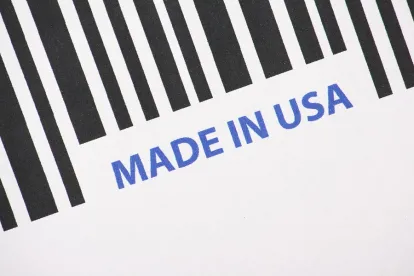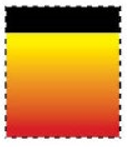Highlights
The USPTO cannot summarily refuse applications to register packaging color combinations without first considering their inherent distinctiveness
In ascertaining whether packaging color combinations meet that qualification, the USPTO must apply the Federal Circuit’s Seabrook factors
The lack of a peripheral border or shape is not fatal to inherent distinctiveness
Color combination marks on product packaging can be inherently distinctive, and thus registrable as trademarks without proof of acquired distinctiveness, according to an April ruling by the U.S. Court of Appeals for the Federal Circuit in In re Forney Industries, Inc.
This decision overrides existing U.S. Patent and Trademark Office (USPTO) policy, with the court holding that such marks are to be evaluated for inherent distinctiveness based on the Seabrook factors.
The applicant, Forney Industries, makes welding and machining products. It applied to register a combination of colors on its packaging or labels that “consists of a solid black stripe at the top. Below the solid black stripe is the color yellow which fades into the color red.” The mark was depicted as follows:
The USPTO refused registration on the basis that the mark is not inherently distinctive, and is registrable only on the Supplemental Register, or on the Principal Register of Trademarks with proof of acquired distinctiveness. The Trademark Trial and Appeal Board (TTAB) affirmed the refusal to register, but the Federal Circuit reversed.
Relying on the U.S. Supreme Court’s decisions regarding product configuration in Qualitex Co. v. Jacobson Prod. Co. and Wal-Mart Stores, Inc. v. Samara Brothers, Inc., the TTAB reasoned that as a particular color on a product or its packaging can never be inherently distinctive, a mark consisting of multiple colors without additional elements such as shapes or designs is not capable of being inherently distinctive. Further, the TTAB held that the color mark applied to product packaging cannot be inherently distinctive without a well-defined peripheral shape or border.
The Federal Circuit found that the TTAB erred by failing to differentiate between product design marks – for which color-based trademarks can never be inherently distinctive – and product packaging marks – for which color marks can be inherently distinctive depending on the character of the color design. The court held that although color is usually perceived as ornamentation, color-based product packaging marks can be inherently distinctive where they serve to indicate the source of goods to a consumer.
Addressing the design at issue, the court found it “falls firmly within the category of marks the Supreme Court described as potential source identifiers,” and that “such a mark can be perceived by consumers to suggest the source of the goods in that type of packaging. Accordingly, rather than blanketly holding that ‘colors alone cannot be inherently distinctive’, the Board should have considered whether [the Applicant’s] mark satisfies this court’s criteria for inherent distinctiveness.”
Nor did the lack of a definite peripheral border or design preclude Forney Industries’ mark from being considered as inherently distinctive. The Federal Circuit noted that nothing in the case law demands such a rule. Rather, the question to be answered is whether the trade dress “makes such an impression on consumers that they will assume the trade dress is associated with a particular source,” based upon the factors set forth in Seabrook Foods, Inc. v. Bar-Well Foods Ltd.:
-
Whether the trade dress is a “common” basic shape or design
-
Whether it is unique or unusual in the particular field
-
Whether it is a mere refinement of a commonly adopted and well-known form of ornamentation for a particular class of goods viewed by the public as a dress or ornamentation for the goods
-
Whether it is capable of creating a commercial impression distinct from the accompanying words
Because Forney Industries did not seek to preempt all use of the colors red, yellow and black, but instead sought to protect only a particular combination of those colors, arranged in a particular design, the Federal Circuit remanded the case to the TTAB to answer the question “whether, as used on its product packaging, the combination of colors and the design those colors create are sufficiently indicative of the source of the goods contained in that packaging…based on the overall impression created by both the colors employed and the pattern created by those colors.”
It is interesting that the Federal Circuit specified use of the Seabrook factors to ascertain whether a color combination can be inherently distinctive. Those factors were developed to determine whether simple design elements on a product package, like ovals or rectangles, were mere ornamentation (and thus not registrable) or instead were capable of being registered without word elements. Prior cases applying the Seabrook factors may be of little assistance for determining the inherent distinctiveness of color combinations.
As part of its support for color combinations being inherently distinctive, the Federal Circuit notably cited a 2018 case out of the U.S. Court of Appeals for the Tenth Circuit – involving Forney Industries and the same color combination mark at issue in this case.
From a practical standpoint, the Federal Circuit’s decision will require the USPTO to analyze color combination marks on packaging, and to consider whether the design makes a source-identifying impression on consumers under the Seabrook factors. Even for the applicant here, that decision is not an automatic yes – that is for the USPTO, and possibly the TTAB, to decide based on the facts in question.
By removing the USPTO’s categorical proscription against principal registration of color combination marks on product packaging without proving acquired distinctiveness, the Federal Circuit’s decision removes at least an initial barrier to registration of these marks. Those who package their products with consistent color combinations should consider whether to register those color schemes as trademarks. Whether the USPTO and the TTAB will make it easier to register such marks even without the categorical refusal remains to be seen.




 />i
/>i

